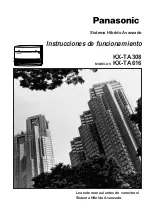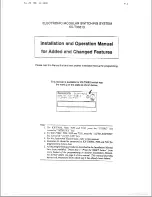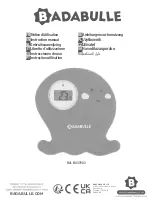
Bosch Security Systems | 2008-12
PRS-1AIP1 IP Audio Interface
| Installation and User Instructions | Configuration
en
| 15
3.2.7
Supervision
The IP Audio Interface contains detectors for
supervision of various functions of the device. This way
internal or external failures, disconnections or short
circuits can be detected. Faults are reported via the Fault
Relay and can be passed to partner devices.
Max. Internal temperature
Default: 70 °C
Enter the threshold for the
Maximum Internal
Temperature
. If the set value is exceeded, a
Temperature
Fault
is generated and shown on the Status page (see
section 4.1).
Min. Backup PWR voltage
Default: 0
Enter the value for the
Minimum Backup Power Voltage
.
If the voltage drops below the set value, a fault is
generated and shown on the Status page (see
section 4.1).
Supervision Sensor Mapping
Default: None
In the
Supervision Sensor Mapping
table you can select
what actions should be taken if one of the faults occur
that are in the table.
Options are:
None, Local, Remote, Local and Remote
.
None
means that no action is taken when this fault
occurs, except for indication on the Status page (see
section 4.1).
Local
means that the fault is only indicated on the device
itself.
Remote
means that the fault is sent to and indicated on
the partner devices.
Local and Remote
means that the fault is indicated on
both the device itself and the partner devices.
Faults that can be mapped:
Control Inputs 1..8 fault
. This fault can occur if the
connections to one or more of the Control Inputs are
interrupted or shorted. Supervision should be enabled
to detect this type fault (see section 3.2.8).
Temperature fault
. This fault occurs if the set
temperature is exceeded (see section 3.2.7).
Backup Power fault
. This fault occurs when the backup
voltage drops below the set value (see section 3.2.7).
Main Power fault
. This fault occurs when the main
power supply becomes disconnected.
Condenser Microphone fault
. This fault occurs when
the connected condenser microphone becomes
disconnected or fails. Supervision for the microphone
input should be enabled (see section 3.2.6).
Dynamic Microphone fault
. This fault occurs when
the connected dynamic microphone becomes
disconnected or fails. Supervision for the microphone
input should be enabled (see section 3.2.6).
Pilot Tone fault.
This fault occurs when no pilot tone is
detected at Audio Input 2. Pilot Tone supervision should
be enabled (see section 3.2.6).
Stream Loss fault.
This fault occurs when the incoming
data stream is lost, e.g. because the device became
disconnected from the switch. A Stream Loss fault can
only be Local, as there is no way to inform the partner
devices, because of the disconnection.
Submit / Cancel button
Submit saves the set values, restarts the device and
returns back to the last screen. Cancel restores the last
submitted values.
l
figure 3.8: Supervision screen (default)














































